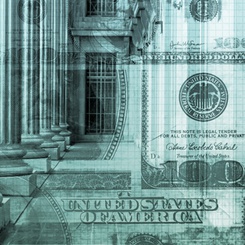Investors have a range of information sources to use when they make their investment decisions. Firstly, they have material from the company itself, such as share prospectuses and annual reports. But there are also several third-party sources of information, including reports from equity analysts and credit rating agencies.
Equity analysts analyse the ‘fundamentals’ of a company and publish their evaluation of how well the company’s shares might perform in the future. Credit rating agencies assess credit risk, analysing companies’ financial strength and creditworthiness. By weighing and considering these various sources of information, investors can get a sense of the potential upsides – and downsides – of investing in a share.
Equity analysts and risk
Although they do make risk assessments, or build risk into their company analyses, equity analysts have traditionally been seen as a provider of new information about the level of companies’ future cash flows, rather than the riskiness of these cash flows. Even in academic studies that examine the impact of equity analysts’ information, the possibility that equity analysts inform the market of equity risk has not yet been considered.
We wanted to explore this area further. Specifically, we wanted to find out whether equity analysts were an important source of information about equity risk, in addition to companies’ future cash flows. In other words, do equity risk ratings have any impact on the stock market? Do investors see them as valuable? And how do they compare with other sources of information about risk?
Looking at the data
We tested our theory with an analysis of 13,384 equity risk ratings issued by Citigroup, a leading stockbroker that employs many equity analysts, between 2000 and 2006. Brokers like Citigroup define ‘risk’ as the level of share-price volatility expected in the future. ‘Low’ and ‘medium’ risk stocks have predictable earnings and dividends. ‘High’ risk stocks are less predictable, making them suitable for more aggressive investors. ‘Speculative’ stocks are volatile and unpredictable, so they are best left to sophisticated investors with high tolerances for risk. Most stocks in our data sample were rated ‘High’ or ‘Speculative’.
Along with their risk assessment for a company, Citigroup also publish their investment recommendation for its shares (‘buy’, ‘sell’, ‘hold’ and so on) and a target for its share price over the next twelve months. Most stocks analysed by Citigroup in our sample were expected to generate positive returns (in other words, the price was expected to rise), with the expected return ranging from 14.5% to 31.5%.
Impact on the market
To gauge the influence of equity analysts’ reports on the market, we looked at abnormal stock return over the three days around the issue date of the reports. We found that changes in equity risk ratings did indeed influence stock prices, and that the effect was stronger for negative evaluations (i.e., increase in equity risk ratings) than for positive ones (i.e., decrease in equity risk ratings). When analysts assessed a higher risk, prices fell by 1.65%–2.77%, over and above the price adjustments due to the overall market movement and other analyst information outputs about the company, during the three-day period. But when they assessed a lower risk, prices would only rise abnormally by 0.59%–0.89%.
We also found that risk ratings could assist investors in their interpretations of equity analysts’ stock recommendations and share-price targets. A recommendation downgrade was not the same for stocks with different levels of risk. For instance, if a recommendation was downgraded (from ‘hold’ to ‘sell’, for example), and the stock was assessed as being ‘low risk’, prices fell abnormally by around 0.97%; but if the stock was assessed as ‘speculative’ (risky), prices fell abnormally by around 4.06%.
Stock market reacts to information about future cash flows as well as equity risk. We wanted to find out if the stock market reaction to changes in equity analysts’ risk ratings is because the ratings inform the market about changes in equity risk, but not because they signal changes in future cash flows. Our analysis using the Fama-French three-factor model confirmed the former.
Analyst risk ratings vs. credit ratings
Apart from equity analysts, other information intermediaries such as credit analysts also provide information about risk to investors. Such alternative information about risk could serve as a benchmark to evaluate the importance of equity risk ratings. We compared equity risk ratings with credit ratings along several dimensions: breadth of coverage, frequency/timeline and impact on price.
Our findings showed that equity risk ratings compare very favourably with credit ratings as a source of information about risk. In particular, we found that equity risk ratings took the lead in providing information about risk. Therefore, when equity analysts say that the risk of a share has increased, a credit-rating downgrade for the company often follows later on. Also, for companies that are covered by equity analysts, the market shows less of a reaction to credit downgrades. So equity risk assessments ‘lead’ while credit ratings ‘follow’.
These findings imply that equity analysts’ risk ratings are regarded as a more useful and timely source of information than credit ratings, despite the fact that they appear less frequently.
Our work is only a first step in understanding the very complex relationship between analyst information and investment returns. But it does show that changes in equity risk ratings are an important source of new information about equity risk for investors. By examining analysts’ risk ratings, our work has helped to extend the literature on equity analysts from the past focus on earnings or cash-flow forecasts in the past.
Further Reading:
"Equity Analysts and the Market’s Assessment of Risk", published in Journal of Accouting Research.









